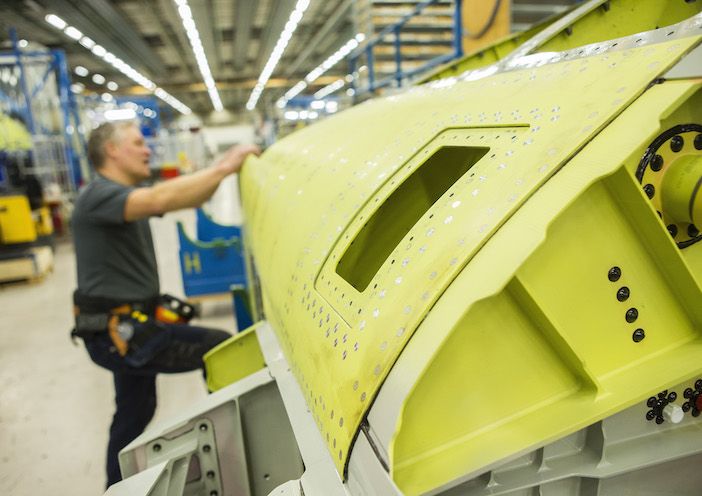Testing of Saab’s Gripen E fighter has moved on from initial flight trials to testing of the aircraft’s tactical and sensor systems.
According to Saab and as reported by Jane’s, Saab’s six test aircraft are progressing as planned through flight testing and its tactical suite and sensors and are now undergoing testing.
The first Gripen E test aircraft successfully completed its maiden flight over southern Sweden in June 2017.
During a presentation given last week about the Gripen program’s progress, Saab’s head of business unit Gripen E/F, Eddy De La Motte said, “We have six aircraft currently in flight testing and we passed 300 hours a couple of weeks ago.
“Flight testing is proceeding to plan and now the tactical suite and sensor systems are the testing focus – the radar, the infrared search and track, the electronic warfare and other mission systems.”
The sensor and tactical systems of Gripen allows it to collect and use data in the battle cloud from other Gripen fighters, or other land and sea-based units. Infrared search and track (IRST) is an electro-optical system mounted on top of Gripen’s nose that can register heat emissions from other aircraft, helicopters and from objects on the ground and sea surface. IRST is a passive sensor and therefore doesn’t give a fighter’s position away.
Gripen’s E/F fighter is also fitted with the Selex ES-05 Raven Active Electronically Scanned Array (AESA) radar which uses an array of small antennas. AESA can simultaneously track different targets and track targets independently of search volumes. According to Saab, IRST and AESA mean the Gripen can offer full operational search and track functionality with Identification Friend-or-Foe capabilities.
Gripen’s internal electronic warfare (EW) system functions as a passive or active sensor, warning for incoming missiles or radar. It can also be used for electronic attacks and jamming other radars. Coupled with countermeasures such as chaffs and flares, the EW system can enhance the survivability of the aircraft.
Eddy said that the sensor tests already performed on on the Gripen E had been successful. “The results so far suggest the sensor systems are performing better than expected,” he said.
Earlier this year, the first serially-produced Gripen E made its maiden flight and was delivered to the joint test flight programme in Sweden.
For more on the testing and development of the Gripen E fighter read our feature here





